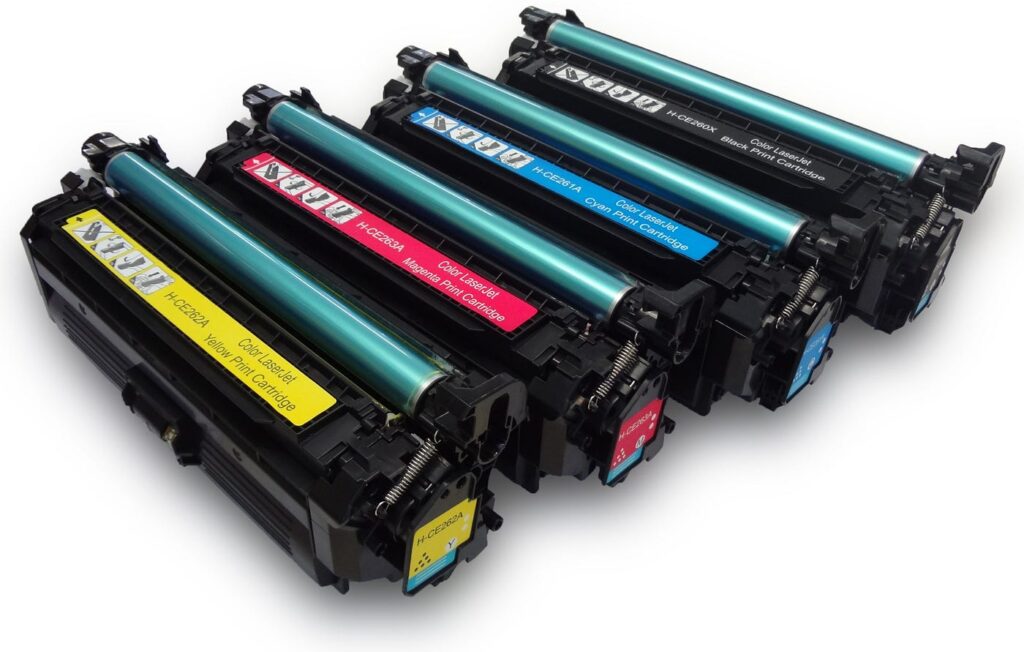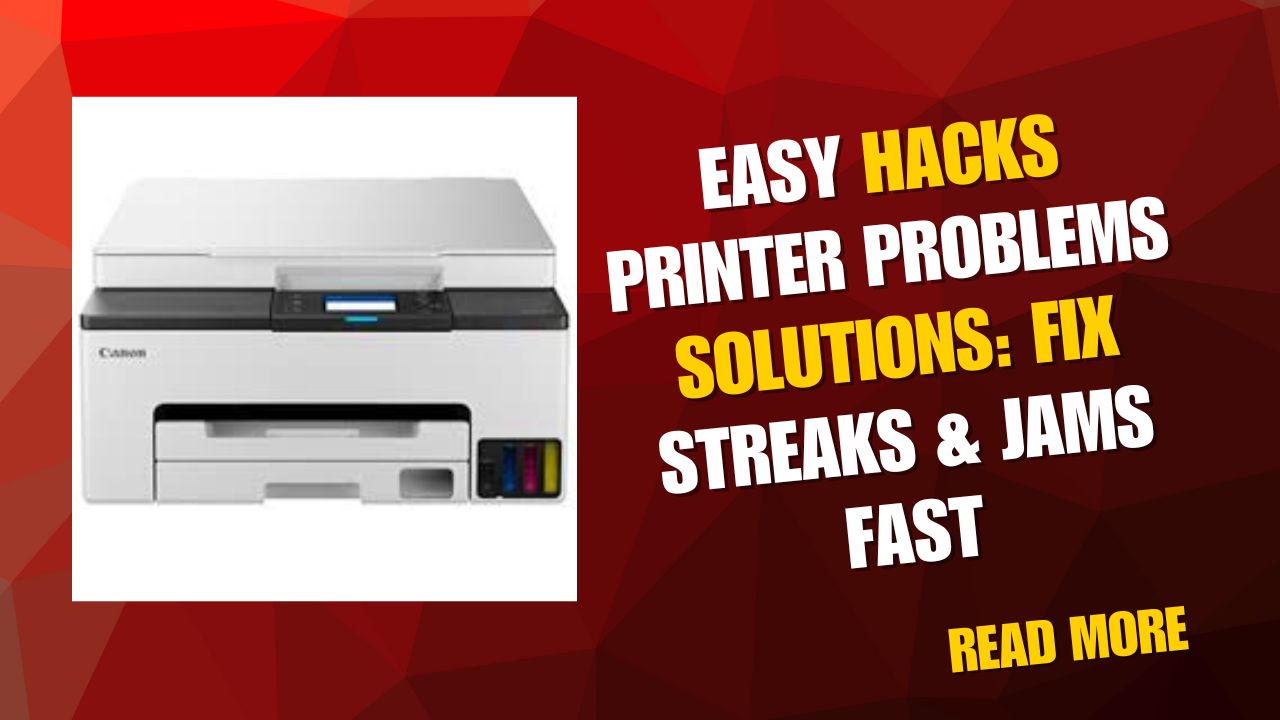Introduction
Easy hacks printer problems solutions can transform your printing experience from frustrating struggles to smooth operations. Whether you’re dealing with streaky prints that make documents look unprofessional, stubborn paper jams that seem impossible to clear, or mysterious error messages that appear without warning, these simple tricks can save you hours of frustration and expensive service calls.
Most printer problems have surprisingly simple solutions that don’t require technical expertise or special tools. The key is knowing which hack to apply for each specific issue. These time-tested methods have helped countless users restore their printers to perfect working condition using common household items and basic troubleshooting techniques.
This comprehensive guide reveals insider secrets that repair technicians use, along with creative solutions discovered by experienced users. By mastering these easy hacks, you’ll become the go-to printer problem solver in your home or office, capable of handling everything from minor annoyances to major malfunctions with confidence and skill.
What Are DIY Printer Problem Solving Techniques?
DIY printer problem solving techniques are simple, user-friendly methods for diagnosing and fixing common printer malfunctions without professional assistance. These approaches focus on practical solutions using readily available materials and straightforward procedures that anyone can follow successfully.
The foundation of effective DIY printer repair lies in understanding that most problems stem from predictable causes: clogged components, misaligned parts, software conflicts, or consumable issues. By addressing these root causes systematically, you can resolve the majority of printer problems quickly and permanently.
These techniques emphasize prevention through regular maintenance, early problem detection through careful observation, and systematic troubleshooting that eliminates guesswork. The goal is to restore functionality while avoiding actions that might cause additional damage or void warranties.
Successful DIY printer repair combines logical thinking with proven techniques that have worked for millions of users worldwide. Rather than random attempts that waste time and potentially worsen problems, these methods follow tested procedures that consistently produce positive results.
The beauty of DIY printer solutions lies in their accessibility—most require only basic tools like cotton swabs, distilled water, and common household items. This approach empowers users to maintain their printers proactively and handle emergencies independently, regardless of their technical background or experience level.
8 Ingenious Easy Hacks Printer Problems Solutions

1. The Hair Dryer Hack for Stubborn Paper Jams
When paper tears during jam removal, leaving fragments stuck in unreachable places, this unconventional method works wonders.
Step-by-Step Process:
- Unplug the printer and allow it to cool completely
- Set a hair dryer to low heat and direct airflow into the paper path
- The warm air softens paper fibers, making fragments easier to remove
- Use tweezers to grasp loosened pieces and pull gently
- This technique works especially well for glossy photo paper remnants
- Clean any adhesive residue with isopropyl alcohol afterward
2. The Distilled Water Print Head Revival Method
Clogged print heads cause streaky prints and missing colors, but this simple hack often restores them completely.
Revival Technique:
- Remove ink cartridges and locate the print head assembly
- Dampen a coffee filter with distilled water (never tap water)
- Place the print head face-down on the damp filter for 10 minutes
- Blot gently with a dry section of the filter
- Reinstall cartridges and run three cleaning cycles
- This method dissolves dried ink without damaging delicate components
3. The Rubber Rejuvenation Trick for Feed Problems
When paper won’t feed properly, worn rubber rollers are often the culprit, but replacement isn’t always necessary.
Roller Restoration Steps:
- Clean rollers with isopropyl alcohol to remove paper dust buildup
- Use a slightly damp cloth to restore tackiness to smooth rollers
- For severely worn rollers, wrap thin rubber bands around them temporarily
- This increases grip and extends roller life until replacement is possible
- Test feeding with different paper weights to verify improvement

4. The Strategic Cartridge Massage for Recognition Issues
When printers refuse to recognize cartridges, this gentle technique often resolves the problem instantly.
Massage Method:
- Remove the problematic cartridge carefully
- Locate the electronic contacts (usually gold-colored strips)
- Gently massage the contacts with a clean, dry cotton swab
- This removes oxidation and improves electrical connections
- Reinstall the cartridge firmly until it clicks into place
- Run a test print to confirm recognition
5. The Network Reset Magic for Connection Problems
Wireless printer connectivity issues often resolve with this comprehensive reset procedure.
Complete Reset Process:
- Hold the printer’s reset button for 30 seconds while powered on
- Disconnect the power cord and wait two minutes
- Restart your router and wait for full boot-up
- Reconnect printer power and run the wireless setup wizard
- This clears corrupted network settings and establishes fresh connections
- Document your network password for future reference
6. The Alignment Cheat for Crooked Printing
When documents print at angles or with margins off-center, this quick alignment hack usually fixes the issue.
Precision Alignment Steps:
- Print the printer’s built-in alignment page
- Measure the margins with a ruler to identify the deviation
- Access printer properties and adjust margins manually to compensate
- For physical misalignment, check paper guides and adjust them precisely
- Ensure paper is loaded squarely against the guides
- Test with a single sheet before printing important documents

7. The Ink Cartridge CPR for “Empty” Cartridges
Many “empty” cartridges still contain usable ink that this technique can access.
Cartridge Revival Method:
- Remove the cartridge and examine the ink level windows
- If ink is visible, the cartridge isn’t truly empty
- Place a small piece of tape over the ink level sensor
- This tricks the printer into ignoring false empty warnings
- Monitor actual print quality to determine real depletion
- Remove tape when prints begin to fade noticeably
8. The Driver Download Shortcut for Software Issues
Driver problems cause numerous printing failures, but this efficient approach resolves them quickly.
Streamlined Driver Solution:
- Note your exact printer model number from the device label
- Visit the manufacturer’s website and use their automatic detection tool
- Download only the basic driver package, not the full software suite
- Uninstall existing drivers completely before installing new ones
- Restart your computer after installation to ensure proper integration
- Set the printer as your default device in system settings

Professional-Grade Tools for Home Users
Modern printer maintenance has become more accessible through specialized tools designed for home users. Digital calipers help measure paper thickness accurately, ensuring you’re using appropriate stock for your printer’s specifications. Precision tweezers with angled tips make removing paper fragments safer and more effective than improvised tools.
Compressed air cans specifically designed for electronics provide controlled cleaning power without moisture that could damage sensitive components. These tools often include precision nozzles that direct airflow exactly where needed without causing component displacement.
Printer cleaning kits contain pre-measured cleaning solutions, lint-free cloths, and detailed instructions for maintaining different printer types. These professional-grade supplies ensure you’re using appropriate materials that won’t damage delicate print heads or electronic contacts.
USB-powered inspection cameras allow detailed examination of internal components without disassembly. These tiny cameras connect to smartphones or computers, providing clear views of paper paths, roller conditions, and potential obstructions that are invisible to naked eye inspection.
Critical Mistakes That Make Printer Problems Worse
The most damaging mistake users make when attempting easy hacks printer problems solutions is applying excessive force to mechanical components. Printer mechanisms are precisely calibrated, and forcing stuck parts often causes expensive damage that requires professional repair or complete replacement.
Using incorrect cleaning materials destroys print heads and electronic components permanently. Tap water contains minerals that clog nozzles, while household cleaners can dissolve adhesives and damage plastics. Always use distilled water and manufacturer-approved cleaning solutions for internal components.
Ignoring safety precautions during DIY repairs creates risks of electrical shock and injury. Always disconnect power before accessing internal components, and never attempt repairs while the printer is operating. Some laser printers contain high-voltage components that remain dangerous even when unplugged.
Mixing different troubleshooting approaches simultaneously makes it impossible to identify which solution actually works. Change only one variable at a time, test the results, then proceed to the next potential fix. This systematic approach prevents creating new problems while solving existing ones.
Delaying simple maintenance allows minor issues to develop into major problems that require expensive solutions. Regular cleaning, proper paper storage, and attention to early warning signs prevent most printer problems from becoming serious malfunctions that interrupt productivity.
Frequently Asked Questions
Q: Are these DIY printer hacks safe for all printer models and brands? A: Most techniques work universally, but always consult your printer manual first. Laser printers have different maintenance requirements than inkjets, and some methods may void warranties on newer models. Start with the gentlest approaches first.
Q: How can I tell if a printer problem requires professional repair versus DIY solutions? A: Attempt DIY solutions for software issues, minor jams, and print quality problems. Seek professional help for strange noises, visible component damage, repeated failures of the same part, or problems that worsen despite troubleshooting attempts.
Q: What household items work best for printer maintenance and emergency repairs? A: Distilled water, isopropyl alcohol, cotton swabs, coffee filters, tweezers, and clean cloths handle most maintenance needs. Avoid paper towels, tissues, and tap water that can leave residue or cause damage.
Q: How often should I perform preventive maintenance using these hacks? A: Clean print heads monthly, dust external surfaces weekly, check paper quality before loading, and perform alignment checks quarterly. Heavy users should increase frequency, while occasional users can extend intervals slightly.
Conclusion
Mastering easy hacks printer problems solutions empowers you to handle the vast majority of printing issues without expensive service calls or lengthy downtime. These proven techniques address everything from minor annoyances like streaky prints to major disruptions like stubborn paper jams, using simple tools and straightforward procedures.
The key to successful DIY printer repair lies in systematic troubleshooting, safety awareness, and patience. Most printer problems have simple solutions when approached methodically, starting with the gentlest techniques before progressing to more involved procedures. Regular maintenance using these hacks prevents many issues from developing into serious problems.
By implementing these strategies and avoiding common mistakes, you’ll transform printer troubles from major frustrations into minor inconveniences. Keep this guide handy for reference, and don’t hesitate to try multiple approaches when initial attempts don’t succeed. With practice and experience, you’ll develop the confidence to tackle virtually any printer problem that arises, saving time, money, and stress while maintaining reliable printing capabilities.
Printer Problems Slow Workday Solutions: Fix Delays & Boost Productivity Read More




